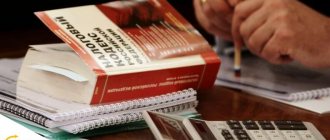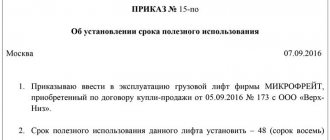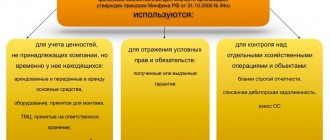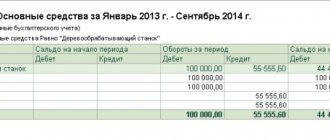Features of objects
The concept of semi-finished products manufactured by an enterprise independently is, in its economic essence, similar to the category of work in progress. Like WIP, they do not go through all stages of the technological process. Accordingly, semi-finished products cannot be called the final product. However, their essential feature is that at the previous stage they were brought to a certain state of readiness. Therefore, semi-finished products can subsequently:
- Sold to third party companies.
- Sent to the next workshop to create the finished product.
- Transferred to a structural unit (for example, to auxiliary production).
Account 21
As stated above, this article can be used to reflect information about semi-finished products of own production. This means that as soon as the products to be further processed are ready, they are moved to a special warehouse. The transactions will be reflected in 21 accounts. Wiring may be accompanied by some difficulties. In general, the entry looks like this: db sch. 20 CD count. 21. Analytics is carried out by item and storage location. The spread of the semi-finished method was due to psychological reasons. The fact is that managers and accounting employees, especially those who do not directly work in accounting, sought to see the movement of material assets as they really are. The semi-finished method ensures this fully.
Postings to account “21”
By debit
| Debit | Credit | Content | Document |
| 21 | 000 | Entering initial balances: semi-finished products of own production | Entering balances |
| 21 | 20.01 | Adjustment of the cost of semi-finished products of own production (main) for the difference between the planned and actual cost | Regular operation |
| 21 | 20.01 | Production of semi-finished products of own production at planned cost. According to the accounting policy, the organization produces products without using account 40 “Product Output” | Shift production report |
| 21 | 20.01 | Production of semi-finished products from our own main production at planned cost | Shift production report |
| 21 | 23 | Production of semi-finished products from our own auxiliary production at planned cost | Shift production report |
| 21 | 23 | Adjustment of the cost of semi-finished products of own production (auxiliary) for the difference between the planned and actual cost | Regular operation |
| 21 | 91.01 | Surplus of semi-finished products of own production, identified as a result of inventory. Recognition of other income | Posting of goods |
By loan
| Debit | Credit | Content | Document |
| 20.01 | 21 | Transfer of semi-finished products to main production for further refinement | Shift production report |
| 23 | 21 | Transfer of semi-finished products of own production to auxiliary production for further refinement | Shift production report |
| 25 | 21 | Write-off of semi-finished products of own production to general production expenses | Shift production report |
| 26 | 21 | Write-off of semi-finished products of own production to general business expenses | Shift production report |
| 28 | 21 | Write-off of semi-finished products of own production for correction of defects | Shift production report |
| 90.02.1 | 21 | Sales of semi-finished products of our own production | Sales (acts, invoices) |
| 91.02 | 21 | Sales of semi-finished products of our own production | Sales (acts, invoices) |
| 91.02 | 21 | Transfer of semi-finished products of own production donated free of charge | Operation |
| 91.02 | 21 | Write-off (liquidation) of semi-finished products of own production as a result of natural disasters, fires and other emergency circumstances | Operation |
| 94 | 21 | Shortage of semi-finished products of own production | Write-off of goods |
Specifics of posting
The key problem when reflecting semi-finished products of own production is their valuation. In this case, three approaches are used:
- Cost of objects. Theoretically, this method is considered the most correct option. But it is accompanied by a rather labor-intensive calculation process. Moreover, the accuracy of the calculations will be highly questionable.
- Conditional price. It is determined in accordance with a special price tag that is introduced at the enterprise.
- Transfer price. It is used in all cases of internal cost accounting. He assumes that one workshop sells semi-finished products, and the other, accordingly, purchases them. This method is effective in situations where the selling unit has the right to independently set the price. In this case, the second workshop can purchase them internally or externally at its discretion.
Selling on the side
A new addition to the Instructions for using the Plan is that the sale of semi-finished products can be carried out not only to enterprises, but also to individuals. If these operations are carried out systematically, then account 21 does not apply. When reflecting processes, an account is used. 43, summarizing information about finished products. However, if this fact is episodic in nature, then writing off 21 accounts is carried out as follows:
- db sch. 90.2 CD count. 21 or
- db sch. 91.2 Kd 21.
The choice of account 90 or 91 will depend on whether the sale of semi-finished products is part of the company’s normal activities or not. Meanwhile, the key entries will be:
1. db count 21 CD count. 20 – semi-finished products are transferred to the warehouse.
2. db sch. 20 CD count. 21 – the unit received previously produced products for further processing.
Description of the account “Semi-finished products of own production”
Account 21 “Semi-finished products of own production” is used to account for materials, parts, products, products that have gone through one or more stages of processing at the production facilities of the enterprise, which are not finished products and are intended for further processing, processing, assembly in subsequent technological cycles, or for sale to other organizations, enterprises and individuals, at their actual cost, taking into account all costs associated with their production.
Advantages and disadvantages
Using account 21, a specialist can reflect the production cycle. This, in turn, ensures tighter control over the work of financially responsible employees. However, count 21 has a number of disadvantages. In particular, on the account. 20 “fictitious” turnovers are formed (in economic terms). They will expand as the number of processing steps increases. At the same time, account 21 will be used to calculate each intermediate stage of production. This, in turn, will increase the labor intensity of the specialist’s work. Accordingly, the semi-finished method is complex, cumbersome and economically unprofitable.
OS on off-balance sheet accounts
Fixed assets are assets that are not intended for sale, are capable of generating income and are used for more than 1 year for the production of products, provision of services, management purposes of the organization or provision for temporary use (clause 4 of PBU “Accounting for OS” 6/01, approved. by order of the Ministry of Finance of the Russian Federation dated March 30, 2001 No. 26n).
Fixed assets include buildings, equipment, machines, machines, etc. Accounting for business operations related to fixed assets is carried out using the following accounts in the Chart of Accounts (approved by order of the Ministry of Finance of the Russian Federation dated October 31, 2000 No. 94n): 01, 02, 03, 07, 08.
You will find a list of key accounting entries for fixed assets accounting in the article “Accounting for fixed assets - accounting entries.”
However, in some cases, fixed assets may be reflected in off-balance sheet accounts:
- transfer or lease of fixed assets - accounts are intended for such operations. 011 and 001;
- equipment accepted for installation is recorded on the account. 005;
- depreciation of some types of OS is taken into account on the account. 010.
Let's take a closer look at each situation.
Solution
The practical use of management accounting (previously it was known as operational-technical accounting) eliminates the difficulties that arise. With its help, semi-finished products can be taken into account in physical terms. Meanwhile, experts note that the unfinished method is preferable. It does not involve maintaining an account 21. The transfer of products to the warehouse is reflected exclusively in management documentation. In this case, it is advisable inside the account. 20 show the movement of semi-finished products in physical equivalent.
Who can apply the article?
It is not advisable for manufacturing enterprises carrying out a single output of products to separately open an account to reflect the receipt and movement of semi-finished products created by them independently. Such companies may reflect information on their accounts. 20, opening a separate article in it. The use of account 21 is considered appropriate if there is a mass production of products involving a large number of items. In this case, it becomes possible to monitor and regulate costs, if necessary, and accurately determine the price of semi-finished products when selling them to third-party companies. As a rule, account 21 is used by enterprises engaged in textile, food, chemical and metallurgical production. The technological process they use includes several processing stages. It is carried out in different workshops. At the same time, at the output, each department receives products with certain characteristics. This is considered primary processing.
As objects are further moved, they acquire qualities that make them suitable for consumption by the end user. At each stage of the process, the product is endowed with characteristics that bring it closer to the finished product.
Specifics of working with the account
Self-made semi-finished products include previously purchased materials that have been subjected to special technological processing. They are subsequently used to obtain the finished product. Since full-cycle enterprises may employ several processing lines, account 21 is used to account for all costs associated with their production.
Semi-finished products produced by the enterprise can also be regarded as work in progress.
To systematize all emerging costs, the accounting policy of the enterprise must define a method for valuing semi-finished products. There are several options:
- at the cost of raw materials and materials;
- on direct costs;
- at actual cost;
- at standard cost.
In tax accounting, only one method is used - according to the direct costs of the enterprise. When calculating the cost of production, semi-finished products can be included in the calculation as a complex item, or taken into account under different expense items in detail.
Account 21 is logical to use to account for semi-finished products by category - storage location, names, types and varieties, as well as other significant characteristics.
Off-balance sheet 21 account: 1s
Reflection of funds whose value is up to 3 thousand rubles, excluded from reporting upon commissioning, is carried out in a special article. Subaccounts are opened for account 21. They correspond to the analytical articles of the account. 101, on which fixed assets were reflected before write-off. Sub-accounts can be opened for account 21:
- 21.04 – on machinery and equipment.
- 21.05 – on vehicles.
- 21.06 – for production and household equipment.
- 21.09 – for other OS.
For this article, analytics is carried out in accordance with the nomenclature, financially responsible persons and divisions, types of activities in total and quantitative terms.
Are fixed assets in operational accounting and fixed assets in off-balance sheet accounting the same thing?
Published 03/02/2016 08:53 Fixed assets in operational accounting and fixed assets in off-balance sheet accounting - are they the same thing? This question is often heard from accountants of government agencies. Let's look at it in this article, and also consider an example of purchasing and accounting for a fixed asset worth less than 3,000 rubles in the 1C program: Accounting of a government institution 8.
So, what are fixed assets (fixed assets) in operational accounting? These are operating systems worth up to 3,000 rubles, written off during commissioning and accounted for in 21 accounts. Account 21 is truly an off-balance sheet account, but... it is separated into a separate group.
There is a special section in the program to account for such funds.
But fixed assets accounted for off-balance sheet accounting are located in another section.
So, 21 accounts are fixed assets worth up to 3,000 rubles, then what does off-balance sheet accounting mean? If we open the document “Receipt of fixed assets (off-balance)” and go to the accounting account, we will see that here account 01 is fixed assets received for use.
Account 02 – OS in safekeeping
And score 22 – OS obtained from centralized comparison
Now let's look at the nuances for operating systems in operational accounting. Why in the section there is only the document “Receipt of fixed assets in operational accounting (entry of balances)”? And how do OS get to 21 accounts?
The document “Receipt of fixed assets in operational accounting (input of balances)” is intended for entering when starting to work with the program of incoming balances for fixed assets in operational accounting - fixed assets worth up to 3,000 rubles, written off upon commissioning. Receipt of fixed assets into operational accounting is carried out by documents on commissioning of fixed assets (“Acceptance for accounting of fixed assets and intangible assets”, “Internal transfer of fixed assets”, “Capitalization of fixed assets based on inventory results”, “Free receipt of fixed assets” with the type of operation “Receipt to account 101” ). Let's consider an example of purchasing and accounting for a fixed asset worth less than 3,000 rubles.
We make the document “Purchase of OS, intangible assets”
From this document we form the document “Acceptance for accounting of fixed assets and intangible assets”
Fill out the “Fixed Assets” tab
and the "Depreciation" tab.
The following transactions are generated in the document:
Now this fixed asset is accounted for in 21 accounts. Thus, fixed assets in operational accounting are fixed assets on an off-balance sheet account, but allocated to a separate category.
If you need more information about working in 1C: BGU 8, then you can get our collection of articles for free using the link.
Author of the article: Natalya Stakhneva
Consultant on 1C programs for government agencies
Did you like the article? Subscribe to the newsletter for new materials
Add a comment
Comments
+1 Yulia 08/26/2019 19:10 Hello! Can you please tell me what document can be used to transfer between off-balance sheet accounts?
Quote
+3 Elena 08/03/2018 16:54 Good afternoon. We received free fixed assets up to 3,000 rubles with depreciation. When accepted for accounting, they were written off as off-balance sheet, and depreciation was stuck. How can I write it off in 1.C now? Thanks in advance.
Quote
0 RTN 04/27/2018 16:02 Good afternoon! Please tell me which document should be used to show periodicals on the balance sheet (account 23)?
Quote
+1 Natalya_Stakhneva 03/01/2018 21:43 Hello! You cannot move between a balance sheet account and an off-balance sheet account. You need to write off 21.38 from your account. And make a deposit to account 101
Quote
0 SvetlanaN 02.25.2018 19:23 Hello!!! !!how to display the movement from account 21.38 to account 101.37 Thank you
Quote
Update list of comments
JComments
Financial statements
Regardless of which method - semi-finished or unfinished - a company uses, it needs to pay taxes. The buyer company can recover the tax. To do this, you need to specify the operation code correctly. It is important not to make a mistake here. If the restoration is carried out according to an adjustment invoice, code 18 is entered. If this operation is carried out in relation to the deduction claimed for deduction from the listed advances, then the numbers will be different. In particular, the code is 21. Often, enterprises confuse these numbers. Companies often indicate one invoice code - 21.







